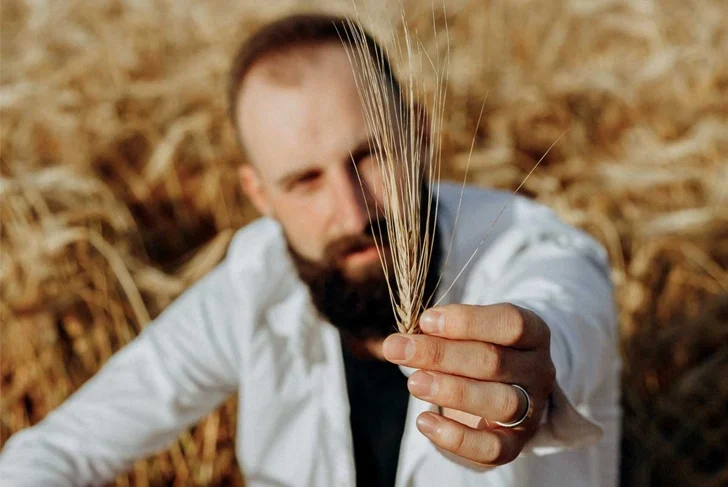Rooted in Responsibility: How the Land Beneath Our Feet and the Seas Beyond Our Shores Are Connected
Every trip to the grocery store tells a story—one woven through sticker prices, sale signs, and seasonal specials. But as shoppers gravitate toward the cheapest options, few pause to consider the hidden costs tucked into each cartload. These costs aren’t just economic—they’re ecological. The land that feeds us, and the oceans that regulate our climate, are both paying a steep price for the way we produce and consume food.
According to Liette Vasseur, a professor of biological sciences at Brock University and a UNESCO Chair in Community Sustainability, our perception of food value is deeply flawed. “When we complain that locally grown peaches are too expensive or marvel at how bananas stay cheap year-round, we’re missing the bigger picture,” she explains. Behind every apple or loaf of bread lies a trail of expenses: seeds, fuel, labor, shipping. Yet somehow, our expectations have been shaped by a system that conceals these realities—often at the expense of those who grow the food and the ecosystems that sustain it.
Soil: The Silent Powerhouse Beneath Our Feet
At the heart of this issue lies an essential, yet often overlooked resource: soil. Soil isn’t just dirt; it’s the foundation of life on land. It stores carbon, filters water, supports biodiversity, and quite literally grows the food we eat. But modern agriculture, with its reliance on chemical inputs and heavy machinery, has degraded about 33% of the Earth’s soil. By 2050, that figure could rise to over 90%, according to the United Nations Food and Agriculture Organization.
James Campbell, a research associate at Heriot-Watt University’s Research Centre for Carbon Solutions, outlines the cascade of consequences from poor soil management. “Erosion, pollution, and the overuse of fertilizers lead to lower soil quality,” he says. “That pushes farmers to apply more chemicals, which further harms soil biodiversity and eventually leaches into our rivers and oceans.”
This leaching is where the story begins to shift—because soil degradation doesn’t just stay on land.
From Soil to Sea: A Carbon Journey
When soil loses its integrity, it also loses its ability to store carbon. That carbon, once safely locked underground, escapes into the atmosphere—and from there, much of it ends up in the ocean. Oceans, like soil, are crucial carbon sinks. But as they absorb excess CO₂, a chemical reaction takes place: the water becomes more acidic.
This process, known as ocean acidification, has far-reaching consequences. Shellfish, coral, and crustaceans—all organisms that rely on calcium carbonate to form their shells and structures—struggle to survive. Vasseur puts it bluntly: “Lobsters may begin to show signs of shell softening. That opens the door to parasites, disease, and population collapse.”
And the effects don’t stop there. As marine species like cod and lobster move north in search of cooler, more hospitable waters, entire ecosystems are reshuffled. Warmer oceans invite invasive species like the green crab, which outcompete native ones and further disrupt the balance.
This ecological domino effect undermines the biodiversity that makes ecosystems resilient—and human life possible. Already, a quarter of the world’s species are at risk of extinction in the coming decades.
Small Steps, Big Impact
Faced with such a global challenge, it’s tempting to feel powerless. But Vasseur reminds us that change begins with everyday choices—especially those we make at the grocery store.
“We have to think about the ethical component of what we’re doing,” she says. “Everything is connected. Each time you take a step, you have an impact on something.”
So how can individuals shift their habits in ways that nurture both the land and sea?
- Buy Local and Regenerative: Purchasing food from local farmers who use sustainable practices reduces the distance food travels and supports soil health. Farmers’ markets and CSA (community-supported agriculture) programs are great entry points.
- Rethink Your Lawn: Swapping out traditional turf for native plants reduces your need for water, fertilizers, and mowing—all of which contribute to environmental degradation.
- Use Fewer Chemicals at Home: Fertilizers and pesticides don’t stay in your garden. They make their way into waterways, harming fish, insects, and other wildlife.
- Keep Cats Indoors: Domestic cats, though adorable, are a serious threat to birds and small animals. If you let them outside, a collar with a bell can help minimize the damage.
A Look Ahead: Innovative Solutions on the Horizon
While lifestyle changes are important, scientific innovations are also stepping in to help restore balance. Campbell and his colleagues are exploring “enhanced weathering,” a process that uses natural rock dust to capture carbon and improve soil fertility. Early trials combining this technique with biochar—a charcoal-like substance made from plant waste—show promising results: healthier soil, increased crop yields, and reduced atmospheric carbon.
These strategies mimic nature’s own cycles, speeding up processes that have existed for millennia. “It’s a way of working with the Earth, not against it,” Campbell says.
Conclusion: A Future Worth Growing
The way forward lies in reconnection—between people and food, between farms and ecosystems, between land and sea. It means paying fair prices for ethically produced food, supporting sustainable practices, and making choices that reflect a deeper understanding of our place in the web of life.
As Vasseur reminds us, our individual choices ripple outward. “We need to think not just about ourselves, but about the generations to come,” she says. “What kind of world are we leaving behind?”
The answer, in part, starts at your next meal. Choose wisely. The planet is on your plate.

